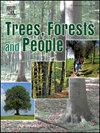Jatropha for Galapagos: Targeted approaches to promoting bioenergy are needed given the different practices and objectives of smallholder farmers
IF 2.7
Q1 FORESTRY
引用次数: 0
Abstract
The government of Ecuador intends to meet the projected renewable energy needs of the Galapagos Islands with oil from Jatropha. However, the yield of dry seeds from the existing Jatropha plantations appears to be too low to meet this demand. We hypothesize that the local Jatropha production system is not yet sufficiently understood. Knowledge of the smallholders’ agronomic management of Jatropha is fundamental to the development of pro-poor bioenergy. Therefore, the objective was to evaluate the agronomic practices and perspectives of Jatropha producers to provide a baseline for initiating a change in the Jatropha production system. A total of 400 small-scale Jatropha producers of Manabí province were surveyed. The following factors were examined: canton, planting distance, propagation method, harvesting time, harvesting frequency, diseases, other uses, soil type and area available for Jatropha production. Jatropha smallholders have different levels of knowledge and expectations regarding the expansion of plantations. Currently, they mainly use Jatropha as live fences, but productivity is limited by the lack of high-yielding varieties and agronomic knowledge. A significant increase in yield is needed to commercialize the biodiesel obtained. Despite its potential profitability, farmers have been hesitant to expand their plantations due to the uncertainties of the sector. It is essential to develop comprehensive strategies that address these issues and provide incentives and technical support for sustainable expansion. This would not only boost the biodiesel industry, but also contribute to climate change mitigation, and the economic development of agricultural communities, in line with the Galapagos energy transition plan.

加拉帕戈斯的麻风树:鉴于小农的做法和目标不同,需要采取有针对性的方法来推广生物能源
厄瓜多尔政府打算用麻疯树的石油来满足加拉帕戈斯群岛预计的可再生能源需求。然而,现有麻疯树种植园的干种子产量似乎太低,无法满足这一需求。我们假设当地的麻疯树生产系统尚未充分了解。了解小农户对麻疯树的农艺学管理是开发有利于穷人的生物能源的基础。因此,目的是评估麻疯树生产者的农艺实践和观点,为启动麻疯树生产系统的变革提供基线。对Manabí省400家小规模麻疯树生产商进行了调查。考察了以下因素:麻疯树种植范围、种植距离、繁殖方式、采收时间、采收频率、病害、其他用途、土壤类型和可用于生产麻疯树的面积。麻疯树小农对扩大种植园有不同程度的知识和期望。目前,他们主要使用麻疯树作为活栅栏,但由于缺乏高产品种和农艺知识,生产力受到限制。要使所获得的生物柴油商业化,需要显著提高产量。尽管具有潜在的盈利能力,但由于该行业的不确定性,农民们一直对扩大种植园犹豫不决。必须制定解决这些问题的综合战略,并为可持续扩张提供奖励和技术支助。这不仅将促进生物柴油产业,而且还将根据加拉帕戈斯群岛的能源转型计划,促进减缓气候变化和农业社区的经济发展。
本文章由计算机程序翻译,如有差异,请以英文原文为准。
求助全文
约1分钟内获得全文
求助全文
来源期刊

Trees, Forests and People
Economics, Econometrics and Finance-Economics, Econometrics and Finance (miscellaneous)
CiteScore
4.30
自引率
7.40%
发文量
172
审稿时长
56 days
 求助内容:
求助内容: 应助结果提醒方式:
应助结果提醒方式:


